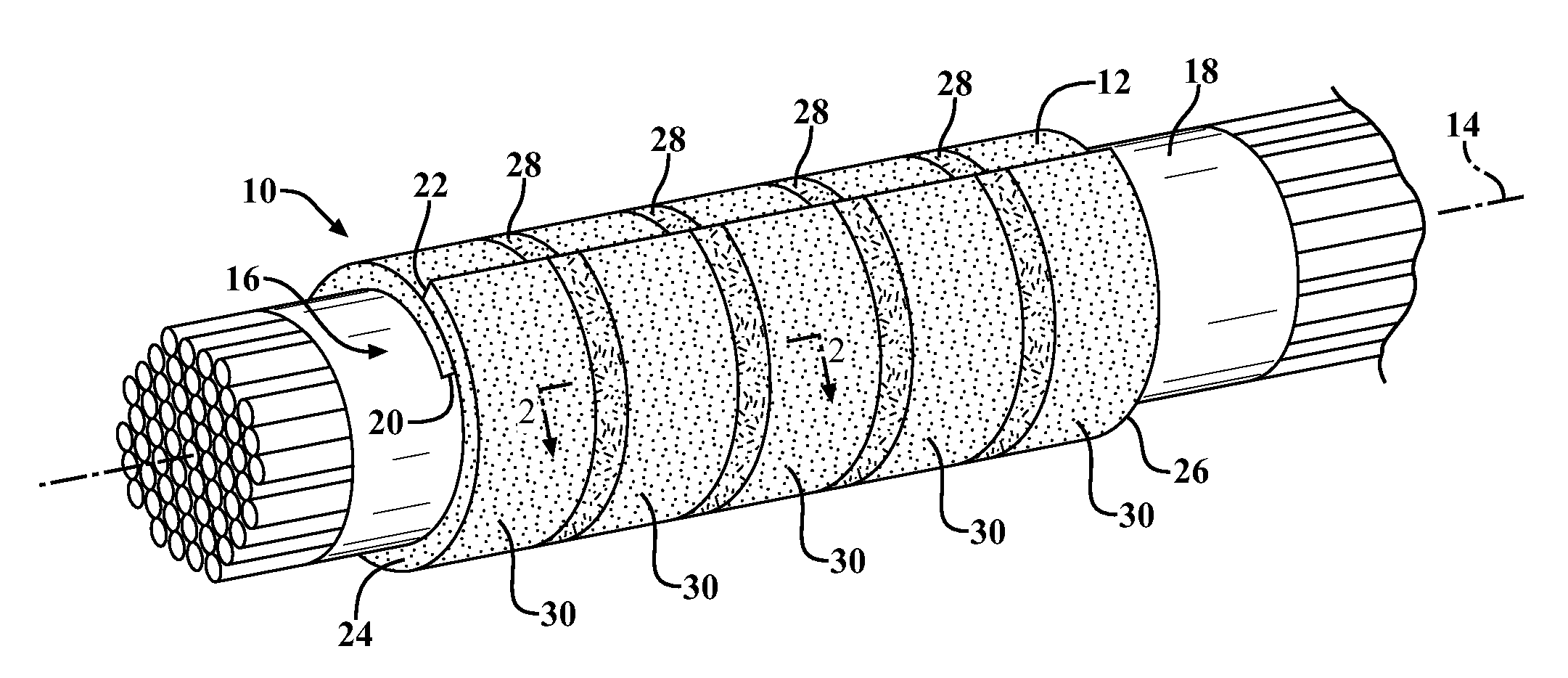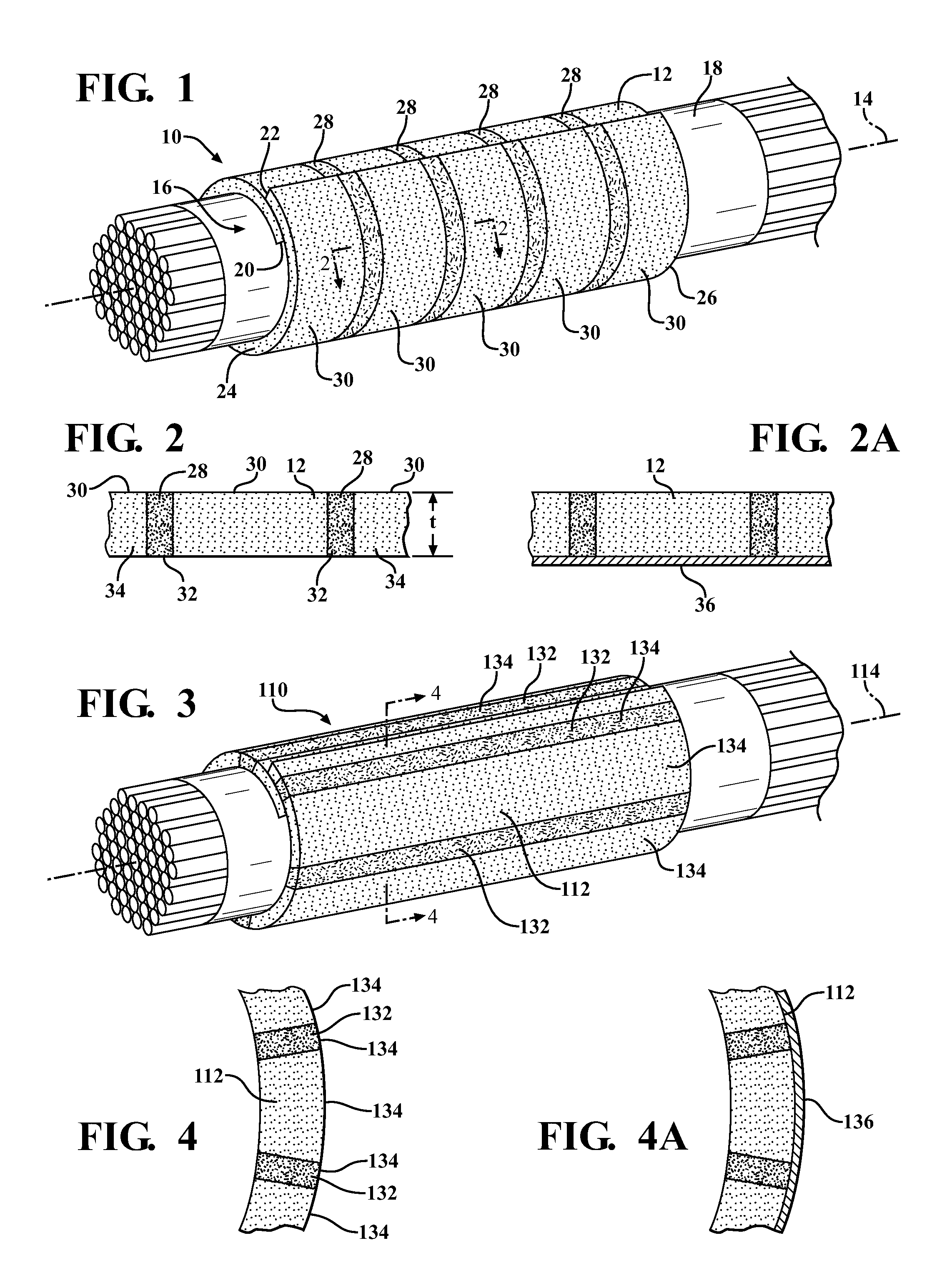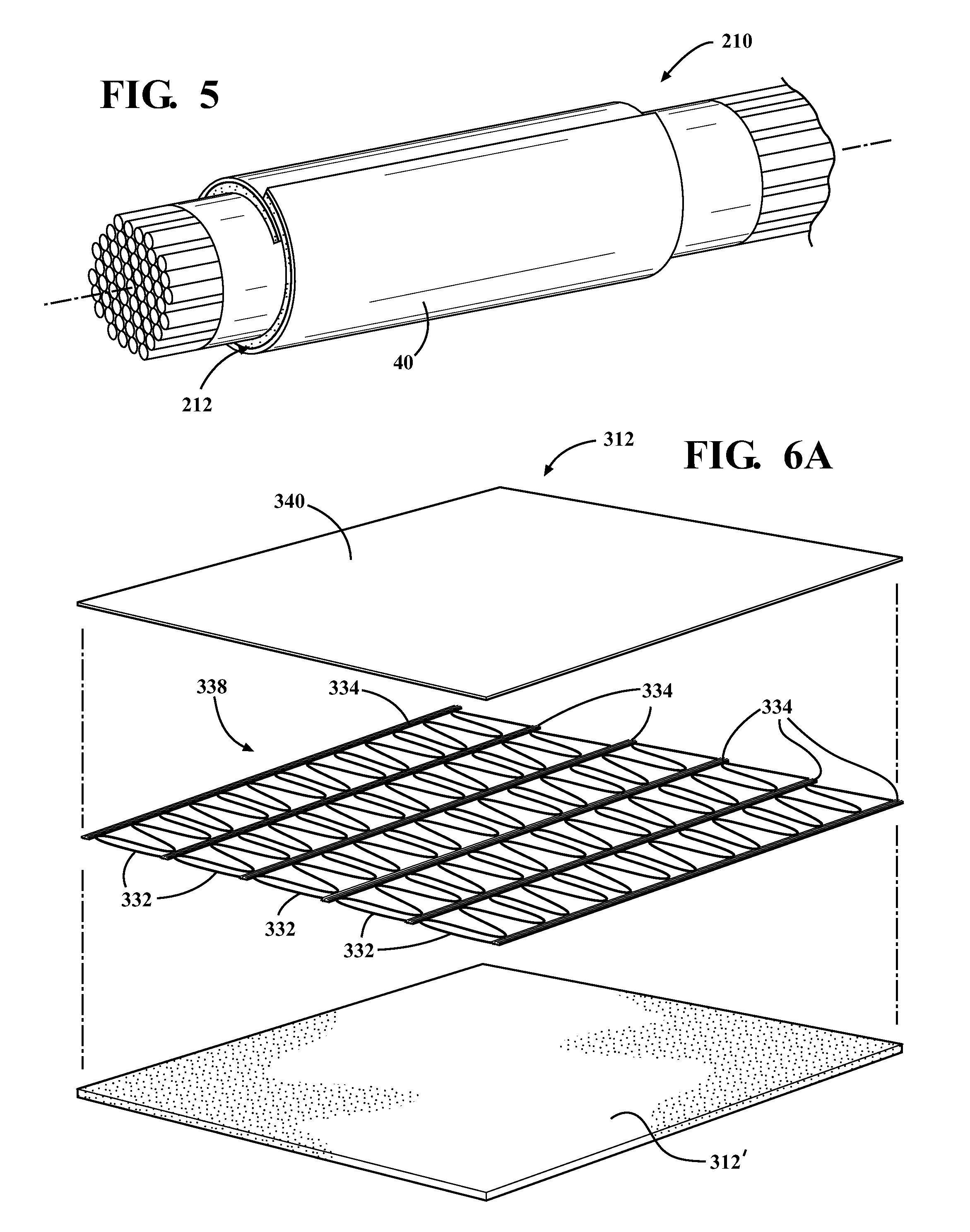Non-woven, self-wrapping thermal sleeve and method of construction thereof
- Summary
- Abstract
- Description
- Claims
- Application Information
AI Technical Summary
Benefits of technology
Problems solved by technology
Method used
Image
Examples
Embodiment Construction
[0042]Referring in more detail to the drawings, FIG. 1 shows a non-woven, self-wrapping protective thermal sleeve, referred to hereafter as sleeve 10, constructed in accordance with one aspect of the invention. The sleeve 10 has a non-woven substrate layer, referred to hereafter as wall 12, constructed from an engineered non-woven material. The wall 12 is heat-set to take on a self-wrapping tubular “cigarette-style” configuration about a central longitudinal axis 14 to provide an enclosed tubular inner cavity 16 when the wall 12 is in a relaxed state, free of externally applied forces. The cavity 16 is readily accessible along the axis 16 so that elongate members, such as a pipe, wires or a wire harness 18, for example, can be readily disposed radially into the cavity 16, and conversely, removed from the cavity 16, such as during service. The wall 12 can be constructed of any suitable size, including length, diameter and wall thickness, wherein the wall 12 has opposite sides 20, 22 ...
PUM
| Property | Measurement | Unit |
|---|---|---|
| Lattice constant | aaaaa | aaaaa |
| Area | aaaaa | aaaaa |
| Melting point | aaaaa | aaaaa |
Abstract
Description
Claims
Application Information
 Login to View More
Login to View More - R&D
- Intellectual Property
- Life Sciences
- Materials
- Tech Scout
- Unparalleled Data Quality
- Higher Quality Content
- 60% Fewer Hallucinations
Browse by: Latest US Patents, China's latest patents, Technical Efficacy Thesaurus, Application Domain, Technology Topic, Popular Technical Reports.
© 2025 PatSnap. All rights reserved.Legal|Privacy policy|Modern Slavery Act Transparency Statement|Sitemap|About US| Contact US: help@patsnap.com



